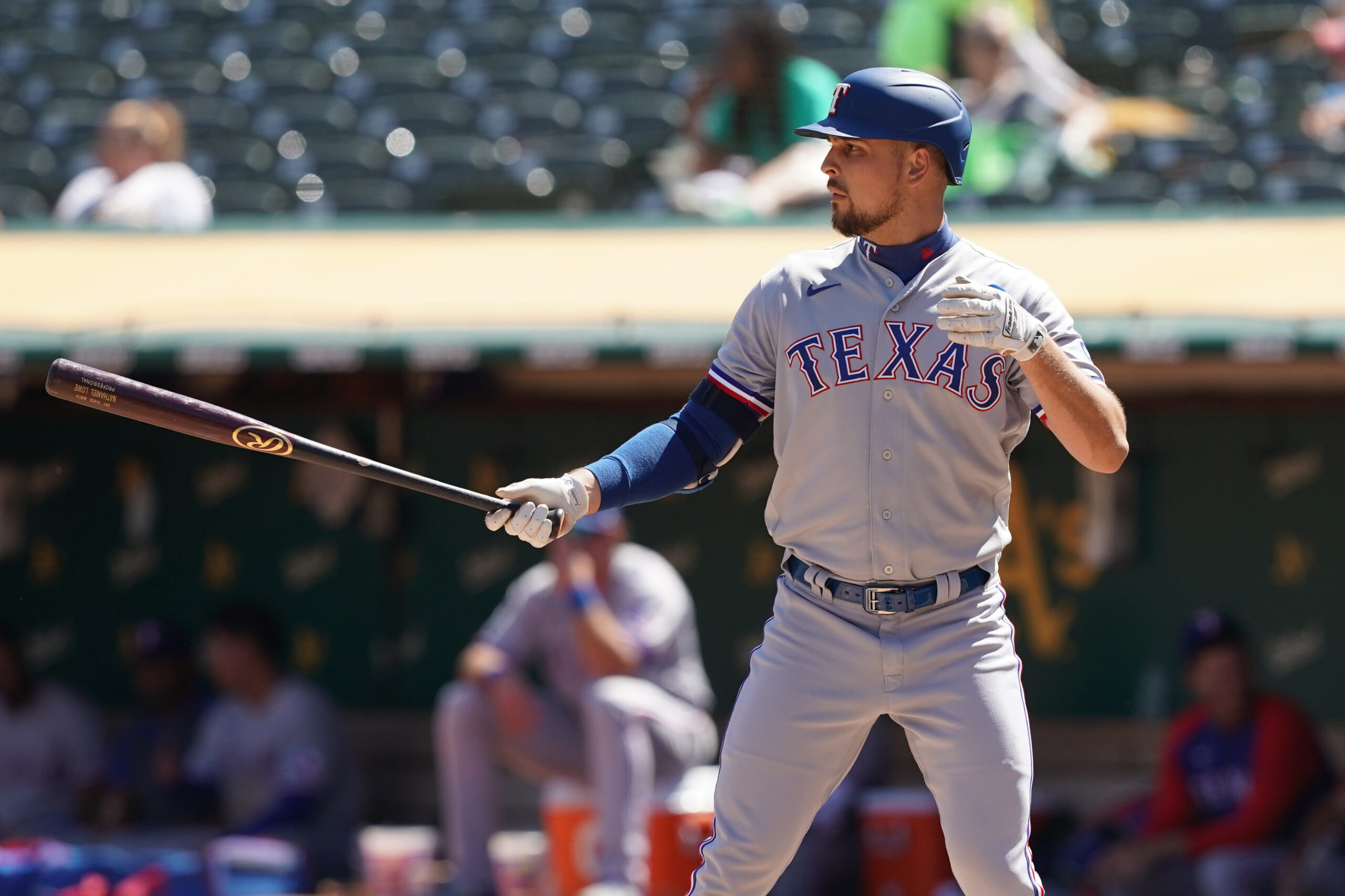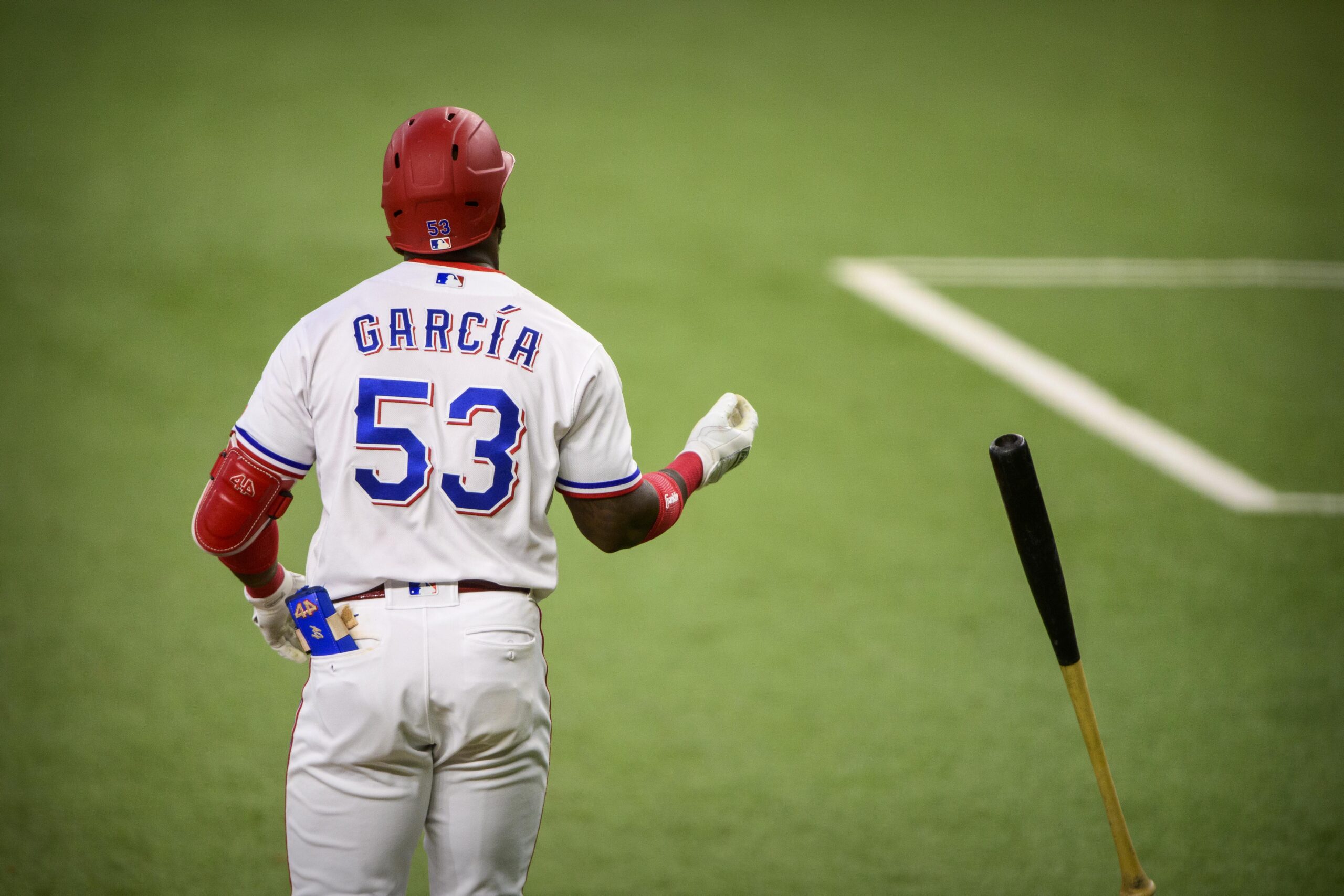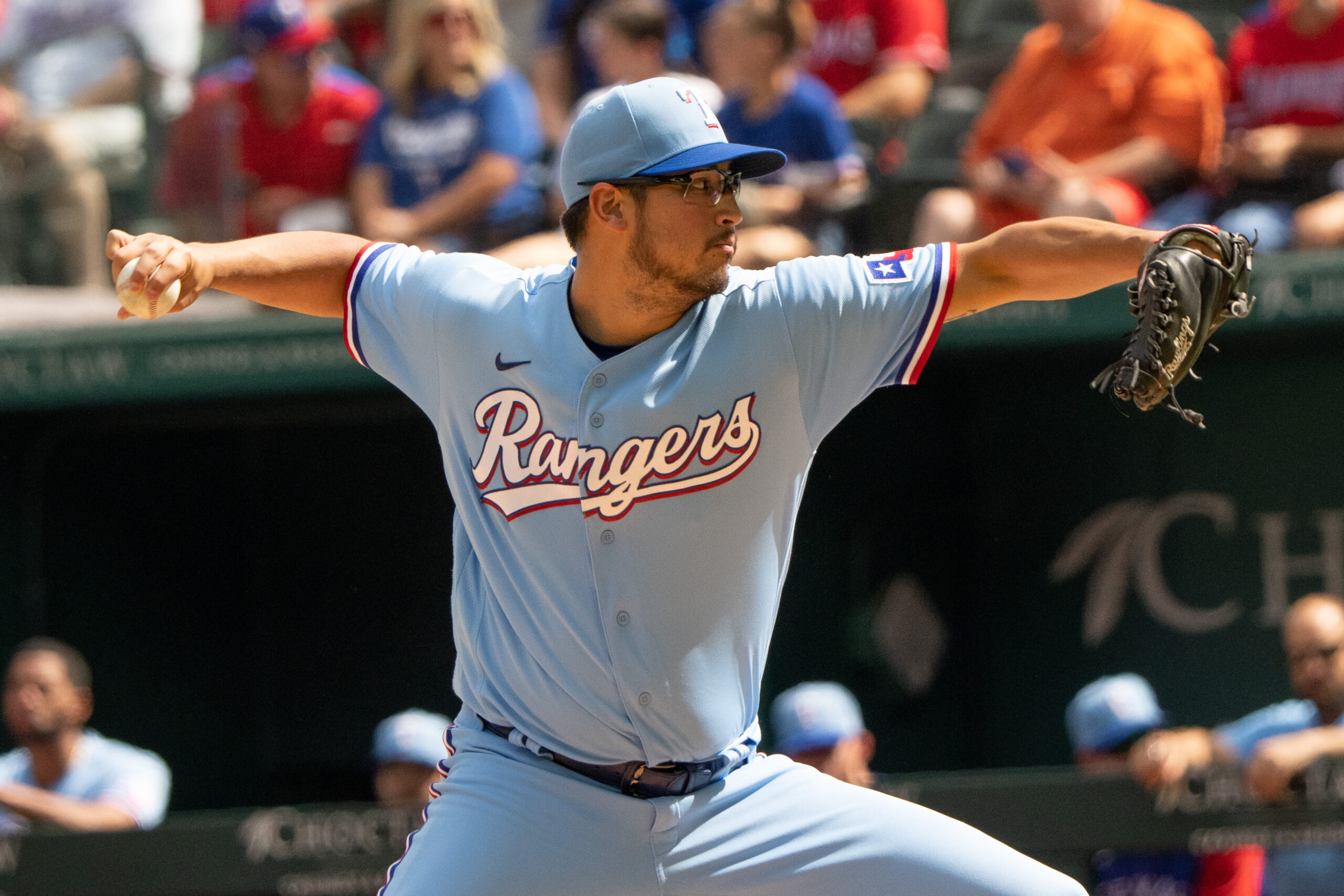Want to know a secret? When they’re not writing about the Rangers, Mike Piellucci and Jamey Newberg are often thinking about the Rangers. And texting about them, too. That’s what two years of friendship and almost as long of a working relationship will do to a pair of baseball nutjobs. So rather than keep those thoughts to themselves, they decided to share them with everyone ahead of what should be an eventful offseason. Here are their thoughts on what’s ahead, from the big questions that must be answered to the names who could be a part of the next great Ranger team.
Mike Piellucci: Well, Jamey, the Rangers’ season is mercifully over. I can’t say it was fun, per se, but I think you laid out a pretty good synopsis a few weeks back for why it was meaningful. And I’m mostly with you! This summer was a slog, and I think it’s fair to wonder just how much ceiling the young players currently in the majors collectively have. But, unlike last year, you can imagine some of these players playing a role on the next good Rangers team. If you had to give me three names that you can see sticking around long-term, who would they be?
Jamey Newberg: The Rangers managed to avoid a club-record 105 losses, but I would suggest there is a franchise first at play here: all three players I’ll give you stand in the center of the diamond. In fact, I might even go four or five deep before I get to a position player (since Josh Jung doesn’t qualify the way you worded the challenge).
Give me Dane Dunning as a steady mid-rotation presence as this cycle shifts from rebuild to relevance. For the next two, I’m choosing from Taylor Hearn, AJ Alexy, and Glenn Otto (all of whom, like Dunning, were acquired via trade). Hearn has done more to establish himself and to earn the trust of the organization, so he gets a spot. I’m on record pegging Otto as the Rangers starter with the most upside, so he gets the nod over Alexy by the slimmest of margins. Do you want to talk me into Isiah Kiner-Falefa or Leody Taveras nudging one of those arms off that list? (Actually, I think the position player I’d single out is Jose Trevino.)
Mike: I’m totally with you on Dunning being the best choice among the pitchers. I think he’s a safe fourth starter with the upside of a No. 3, which is valuable in a vacuum and even more important considering this franchise’s struggle to develop pitching.
I will try to sell you on a position player, but it isn’t any of the ones you named. I was a charter member of the Nathaniel Lowe Appreciation Society well before the Rangers acquired him last winter, and his first season in Texas hasn’t dampened my enthusiasm. In his first full big-league season, Lowe checked in at 13 percent better than league average per wRC+, a metric that measures offense independent of ballpark and defensive factors. For context, that’s one tick higher than Anthony Rizzo, the three-time All-Star (the Yankees’ other big trade deadline acquisition behind you know who), and better than any Rangers full-time first baseman since Mitch Moreland in 2015. He’s also done that without a meaningful platoon split, no small feat for a lefty with fewer than 900 plate appearances to his name.
The defense has been unambiguously terrible, and you’d like to see more power from your first baseman. (I’m at least hopeful about the latter; Lowe is a large man who hit a high rate of barrels last year in Tampa.) But even a medium step forward to, say, 20 percent better than league average would have him knocking on the door of a top-10 player at the position from an offensive standpoint — and you absolutely take whatever defense he delivers if that comes to pass. And if that step doesn’t come to pass? Well, Texas has spent the better part of a decade trying to find a first baseman who can be dependably above average. They can, and have, done far worse.

Jamey: I left Lowe out of that tier for two reasons. First, he’s been reasonably productive overall but not enough to write off Ronald Guzman (who is out of minor-league options) going into 2022.
Second, while the Rangers have consistently backed the idea that Sam Huff can catch in the majors, I think the Trevino/Jonah Heim duo has been good enough to assume they will remain the platoon next season — and at some point next summer, Huff is probably going to be given a chance in Arlington. The 6-foot-5 slugger has a lot of holes in his swing and must improve his approach to earn a steady role, but if he does that, there’s little question that his offensive upside exceeds Lowe’s (and just about anyone else’s in the system). Incidentally, Huff played nothing but first base in what amounted to half a season this year, as he returned from a knee injury. (But it is fair to wonder if the potential move toward automated strike zones will diminish catchers’ defensive value by making pitch-framing moot and increase the likelihood that Huff — who throws extremely well — stays behind the plate.)
So while I’m hopeful that Lowe finds that next gear in his second full season, I’m not sure I’d go so far as to peg him as one of the three players most likely to hold down a significant role on the next winning Texas team.
Mike: Here’s the other component of that Moreland parallel: how many times did Rangers fans wish he’d get replaced, only for him to quietly hold down the fort for seven years? He kept his post because he was dependable and because no one managed to out-do that dependability with something spectacular. Which, make no mistake, Huff has that kind of upside. But the strikeout rate is a huge problem, and he doesn’t have Joey Gallo’s walk rate to offset that.
Not to mention, as long as the knee holds up, he should be given every chance on a rebuilding club to catch. Heim is one month older than Lowe and hit .196/.239/.358 this year, while Trevino is 28 and a career .245/.270/.364 hitter over parts of three MLB seasons. Both have been tremendous defensively this season, which is why I could see either one playing his way into a backup role on this hypothetical next good Rangers team. Heim, in particular, has the minor-league track record at the plate to dream on a bit more and should be given the plate appearances to find out one way or the other. But I’m not displacing Lowe, who we’ve seen produce already, to accommodate two players his age or older who have struggled at the plate, especially not when Huff’s upside is astronomical (and his floor higher, too) if he can stick at catcher. And definitely not for Ronald Guzman.
But, setting that aside, I do want to ask about the man at the controls. How do you evaluate the job Chris Woodward has done, insofar as you can evaluate a manager’s work on a roster that never was built for present-day results in the first place?
Jamey: I’d be pretending to know more than I do if I were to answer that question with any air of confidence. I mean, the national media might not have heated up Padres manager Jayce Tingler’s seat as soon as it did without the televised dugout altercation between Fernando Tatis Jr. and Manny Machado (and the necessarily public fallout from it) a couple of weeks ago. Which is to say we don’t know much about Woodward’s voice in the clubhouse and how it’s being received — but, by all appearances, it certainly seems that he remains in his bosses’ good graces. As you mentioned, the players entrusted to his care were not expected to win (unlike in San Diego), and a manager can only do so much with that. The garish loss total is not as important as the sense of whether Woodward is getting the most out of the players who made up the roster — and a lot of them have shown improvement this season, even if few have the type of upside to build a winner around.
As long as we’re talking about where we go from here with a key figure in 2021, let’s talk Adolis Garcia. On the one hand, he’s just hit 30 homers as a rookie, adds Gold Glove-level defense, plays with an energy that seems useful on a team that needs to learn to win, and is under team control through 2026. On the other, he had an ugly second half at the plate (.211 batting average, .626 OPS) and will be 29 when Opening Day rolls around, making him likely to regress by the time the Rangers are good again. Because of his age and plate approach, his trade value is probably not massive — but he should have some value to teams positioned to win in 2022. Do you shop him?

Mike: I wrote about this yesterday, but Garcia’s season was a microcosm of the Rangers’. His magical May coincided with Texas climbing all the way up to .500, only for both to regress to their very worst tendencies the rest of the way. It’s no coincidence that Garcia’s K rate was a palatable 26 percent that month and above 31 percent in every other one: he’s an impact player when he makes contact, but he never has often enough to stick in the big leagues. Cruel as it is to say, there’s a reason he was DFA’ed in spring training.
Hitting is also one of the first skills to atrophy with age. So the massive length of team control probably doesn’t add the value here it ordinarily would because a team would be betting that soon-to-be 29-year-old who hasn’t and can’t hit especially well can pick up that skill in his 30s. I’m sure one would, but they wouldn’t send back an asset worth more than Garcia’s value to Texas. He’s a familiar face and a burgeoning fan favorite who can man an outfield spot at little cost and provide sporadic jolts of excitement that will liven up what will probably be another rough season in 2022 as the rebuild creeps along. Even if he never approaches his All-Star form again, that has genuine value.
You would think, though, that next season will be an improvement over this one because the Rangers are talking big about spending big. We’ll both be writing a lot more about this in the coming weeks, but give me a preview of your shopping list.
Jamey: I was recently asked about the next two winters and spitballed Carlos Correa and Michael Conforto this offseason and then a Gallo reunion plus Byron Buxton the year after that. But I also believe there’s a reasonable chance that the Rangers take advantage of one of the deepest farm systems in the game — it isn’t as strong at the very top as others, but its volume of legitimate prospects stands out — and package a few prospects to pick up a young impact bat in the next two years. They went down that path last winter in the Lowe deal; I wouldn’t be surprised to see them take a similar shot as the reshaping of the lineup continues.
Mike: I certainly could see it because while they’ve done a great job stockpiling depth throughout the system, that eventually will lead to a 40-man roster crunch. And if the Gallo trade demonstrated anything, it’s that a volume package of solid prospects can fetch a pretty nice player in return.
For me, the list begins at one position: shortstop. And, as it happens, the list at shortstop begins with one name: Carlos Correa. I’ll write more about him soon enough but to me, he’s a tier above Corey Seager and Trevor Story, either of whom would make for fantastic gets in their own right. Our Rangers Vibe Check correspondent, Jared Sandler, had some very interesting things to say about Correa, so be sure to tune in for that tomorrow. And all offseason, for that matter. We’re just getting warmed up here at StrongSide. We’ll see if the same holds true for the Rangers’ checkbook.





